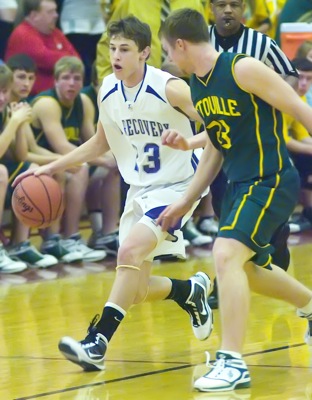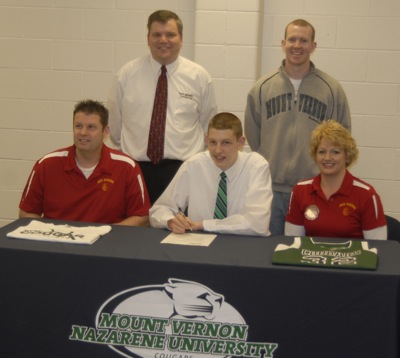Wednesday, March 10th, 2010
Both pairs of eagles incubating
Grand Lake
By Nancy Allen
Two resident pairs of bald eagles have begun incubating an unknown number of eggs in separate nests on Grand Lake, said Sean Finke, coordinator of the Mercer Wildlife Area.
The pair with a nest along the lake's southwest side in the state-protected Mercer Waterfowl Area began incubating Feb. 22 and the pair with a nest behind Aquaview housing subdivision on the lake's south side began incubating Sunday, he said.
Expected hatch date for the waterfowl area pair is March 30, and for the Aquaview pair it's April 11. The incubation period is roughly 35 days.
Finke said the waterfowl area pair built a brand new nest this year about 50 yards from last year's nest. This pair also built last year's nest from scratch after their 2008 nest blew down. The Aquaview pair continues to use the same nest they have used since coming to the lake in 2006.
Since the trees haven't leafed out yet, both nests are visible to local wildlife buffs, though binoculars and/or spotting scopes help viewing.
"The Mercer pair's nest is located straight north of the Mercer Waterfowl Area observation tower," Finke said. "They moved it back into a heron rookery this year. Last year it was off by itself."
Local residents can view the nest from a wooden observation tower at the wildlife area on Ohio 703 between U.S. 127 and the village of Montezuma.
Finke said last week when he observed the wildlife area pair he saw the male and female switch places on the nest and perform egg rolls. The birds turn the incubating eggs periodically to ensure proper development of the chicks.
Last year both pairs raised a total of five young.
The wildlife area pair has nested on the lake since 2001 and the Aquaview pair since 2006. Together both adult pairs have now reared 28 eaglets since coming to Grand Lake.
Biologists with the division of wildlife counted a record 215 nests in Ohio last year, the 22nd consecutive year that the state's breeding bald eagle population has increased. Ohio had 184 nests in 2008.

